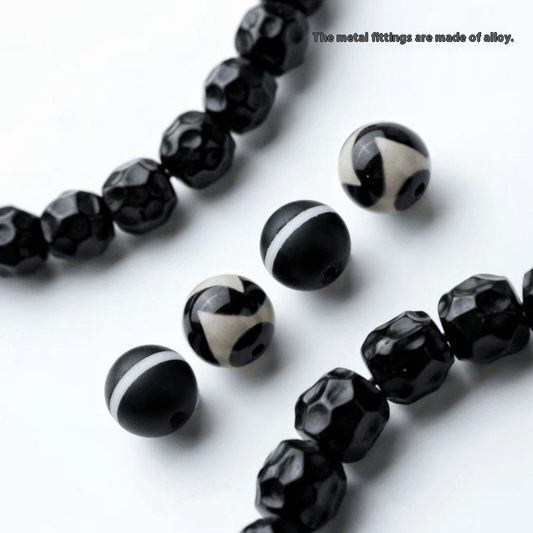
Amid the sophisticated tapestry inside Tibetan faith systems appear two valuable masterpieces: the elaborated thangka and crafted bodhi seed. Every single one, in individualized approach, enables transcendental awakening. The thangka, a detailed mural, displays revered icons, sacred graphics, or ancient stories, offering meditation guidance.
Yet, the bodhi bead, often crafted from fine gems, wooden material, kernels, or osseous tissue, is a tangible reminder of Buddha's realization under the bodhi tree. Touching the beads encourages spiritual concentration.
- Jointly, the thangka and the bodhi bead embody the journey towards enlightenment. They offer a tangible link to the primeval enlightenment of Tibetan Buddhism.
Stories Told by Camel Skeletons
Across the sands of time, ages-old treasures whisper tales of a world long vanished. These are not ornate objects originating in suppressed empires, but straightforward camel bones engraved with inscriptions that preserve the enigmas of a bygone time. Each segment embodies the echo sprung from a life lived, a journey pursued, and a connection to the timeless wisdom embracing which surrounds us all.
- Such objects
- Tokens
- Provide
Revealing the Hidden Language of Thangka Paintings
Tangkas are captivating paintings on canvas, meticulously crafted by Tibetan artists to depict sacred figures and scenes from Buddhist doctrines. Each detail within a thangka is laden with relevance, forming a complex tapestry of visual narratives that guide the viewer on a mindful journey. The tints used in thangkas are not merely aesthetic choices but carry powerful connotations, symbolizing different aspects of the Buddhist ideology. From the solemn figures to the intricate patterns, thangkas offer a peek into the rich world of Tibetan Buddhism, inviting us to consider upon its truths.
- Ancient thangka art often depicts key Buddhist figures such as Buddha Shakyamuni, Bodhisattvas like Avalokiteshvara and Manjushri, and enlightened beings from various factions of Tibetan Buddhism.
- Inside these representations lies a wealth of discernment that can be decoded by those who engage the symbolic language of thangkas.
Buddha's Path to Enlightenment: Embodied in Beads and Bone
Upon the winding course to salvation, the Buddha embraced symbols imbued with profound influence. Every bead and relic held within them the fundamentals of his instruction, manifesting glimpses into the matrix of reality. Using their profile, the Buddha expressed profound discoveries that surpass the realm of material perception.
From chosen spiritual beads, crafted from unique materials, arose vibrations that sounded with the evanescent vibes within. The remains of a sentient, meticulously transformed into tokens, served as tangible symbols of the impermanence constitutional to all existence.
Thangkas: Windows into Himalayan Spirituality
Thangkas radiant paintings on cloth serve as effective representations of Himalayan spirituality. These intricate works of art, meticulously created with artful brushstrokes, depict a vast array of Buddhist deities, mandalas, and scenes from ancient scriptures. Each thangka is a contemplative aid for meditation and contemplation, offering discernment into the multifaceted teachings of Buddhism.
- They are often used in ritual ceremonies in the context of
- expressing states of spiritual awakening.
- Thangkas are not merely decorative creations but rather entries into the rich and intriguing world of Himalayan spiritual traditions.
Bodhi Beads: Embracing Mindfulness and Cultivating Compassion
Each item on a bodhi bead mala whispers tales of ancient wisdom, guiding us on a passage through the tranquil waters of mindfulness. As we seize these intricately created beads, our fingers trace the contours of single one, anchoring our cognition in the present moment. The gentle burden of the beads against our palms serves as a tangible reminder to draw breath, fostering a sense of equanimity.
- Every time bead that passes between our fingers, we enhance compassion, extending it first to ourselves and then outward to the world.
- Sacred teachings teaches us that mindfulness is a art form that requires patience and tenacity.
With the aid of the rhythmic repetition of mantra or simply the mindful tallying of the beads, we release from the relentless chatter of the mind.
The practice employing bodhi beads is a subtle invitation to rekindle our connection with ourselves and the world around us.
Soulful Creation: Camel Bone Bracelets Enhancing Spiritual Progress
Focus represents a compelling drive in our lives, shaping our experiences and guiding us towards our destined path. When we combine this intention with the old knowledge of crafting a camel bone bracelet, we create a potent synergy that can expedite our spiritual growth.Camel bone represents sacred significance, representing toughness. Its natural beauty and unassuming elegance serve as a constant reminder of the essential might within each of us.Through mindful selection of bones, instill intentions into the creation. With every knot or bind, we embody our hopes, dreams, and aspirations for spiritual evolution. This act of creation becomes a mindful activity, synchronizing us with our inner wisdom and guiding us on a road to insight.- Observe how the shade and grain complement your purpose.
- Feel the energy flowing through your hands and into the creation.
- Use sacred light to activate its spiritual essence.
The Fascinating Story of Camel Bone in Buddhism
In the rich tapestry encircling Buddhist tradition, artifacts often hold profound symbolic meaning. Amid these varied objects, camel bone stands out as a peculiar and compelling element. Across history, this material has been integrated in the crafting through various Buddhist artifacts, each imbued with specific denotations.
- Viewed as a symbol of resilience and strength due to the camel's ability to withstand in harsh environments, camel bone often symbolizes spiritual fortitude.
- Complementarily, the color and texture of camel bone are believed via some to hold auspicious connotations, denoting purity and serenity.
Consequently, camel bone has become a significant part of Buddhist history, serving as a tangible relation to the profound teachings through this ancient faith.
Thangka Illustrations: Devotional Narratives
Within the ethereal realm of Tibetan Buddhism, Thangka paintings emerge as sacred portals to enlightenment. These magnificent works, meticulously crafted by skilled artists known as thangkapa, depict a myriad in an array of vibrant deities, celestial beings, and mythical creatures. Each brushstroke embodies profound spiritual significance, narrating ancient tales and philosophical notions.
- Displaying a vast reservoir of Buddhist iconography, Thangkas serve as both devotional objects and instructional tools. Devout practitioners gaze upon these paintings during rituals and meditations, seeking to cultivate spiritual wisdom.
- Elaborately embellished with intricate details incorporating a spectrum of vibrant hues, Thangkas are considered windows into the divine. Every single painting acts as a symbolic representation of the Enlightened One's teachings and the path to liberation.
By the use of their forceful imagery and symbolism, Thangka paintings offer a glimpse into the rich sacred traditions of Tibet. They are a testament to the enduring elegance of Tibetan art and its profound ability to enlighten.
Embracing the Duality: Thangkas and the Cycle of Life and Death
Thangkas, lively crafted Tibetan hangings, communicate a serious study of existence’s temporality. Each intricate image depicts deities and beings engaged in the continuous venture of life and death, a array of birth, growth, impermanence, and regeneration. The artists skillfully interlace these concepts within the thangka's domain, highlighting the interconnectedness of all things. Through vivid representations, they invite us to ponder on our own experience. The cycle endures, a tempo of coming and going, highlighting the preciousness of each moment. By embracing this duality, thangkas teach us to acknowledge the beauty in both life's joys and sorrows.String of Mindfulness: The Significance of Bracelets in Buddhist Practice
In the intricate tapestry of Buddhist practice, seemingly basic objects often hold profound meaning. Among these are bracelets, which serve as tangible representations of devotion and commitment to the philosophy of Buddha. Worn on the wrist, a bracelet operates as a constant reminder of one's aspirations and aspirations. It can evoke the impermanence of life, inducing practitioners to remain aware in the present moment. Some bracelets may harbor sacred characters, such as mantras or the names of Buddhas, which are deemed to bring forth positive energy and well-being. Others are sometimes made from components with spiritual significance, like sandalwood or lotus seeds, boosting the bracelet's impact. Ultimately, the significance of a Buddhist Tibetan-style prayer beads bracelet originates far beyond its physical form. It becomes a powerful tool for contemplation, a prompt to live in harmony with the teachings of Buddha, and a expression of one's unwavering allegiance.